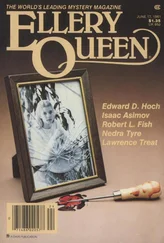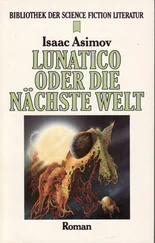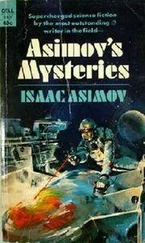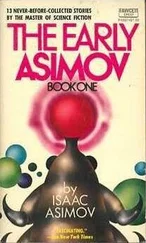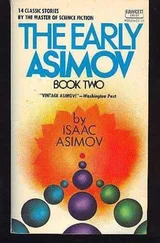Isaac Asimov - Asimov’s Guide To Shakespear. Volume 1
Здесь есть возможность читать онлайн «Isaac Asimov - Asimov’s Guide To Shakespear. Volume 1» весь текст электронной книги совершенно бесплатно (целиком полную версию без сокращений). В некоторых случаях можно слушать аудио, скачать через торрент в формате fb2 и присутствует краткое содержание. Жанр: Культурология, на английском языке. Описание произведения, (предисловие) а так же отзывы посетителей доступны на портале библиотеки ЛибКат.
- Название:Asimov’s Guide To Shakespear. Volume 1
- Автор:
- Жанр:
- Год:неизвестен
- ISBN:нет данных
- Рейтинг книги:4 / 5. Голосов: 1
-
Избранное:Добавить в избранное
- Отзывы:
-
Ваша оценка:
- 80
- 1
- 2
- 3
- 4
- 5
Asimov’s Guide To Shakespear. Volume 1: краткое содержание, описание и аннотация
Предлагаем к чтению аннотацию, описание, краткое содержание или предисловие (зависит от того, что написал сам автор книги «Asimov’s Guide To Shakespear. Volume 1»). Если вы не нашли необходимую информацию о книге — напишите в комментариях, мы постараемся отыскать её.
Asimov’s Guide To Shakespear. Volume 1 — читать онлайн бесплатно полную книгу (весь текст) целиком
Ниже представлен текст книги, разбитый по страницам. Система сохранения места последней прочитанной страницы, позволяет с удобством читать онлайн бесплатно книгу «Asimov’s Guide To Shakespear. Volume 1», без необходимости каждый раз заново искать на чём Вы остановились. Поставьте закладку, и сможете в любой момент перейти на страницу, на которой закончили чтение.
Интервал:
Закладка:
Fortunately for heterosexual sensibilities, this does not happen. When Valentine makes his offer, "Sebastian" swoons. Her true identity is discovered and the repentant Proteus is thus reunited with his ever true Julia.
The Duke and Thurio are also captured by the outlaws and Thurio shows himself to be a coward, while Valentine's bravery is conspicuous. The Duke of Milan therefore consents to have Valentine marry Silvia. Even the outlaws are forgiven and are taken into the employ of the Duke. All is happy as the curtain descends.
17. The Tragedy of Romeo And Juliet
In Romeo and Juliet Shakespeare dramatized a love tale that was well known and much wept over by young people before his time. The nub of the tale, that of two young lovers unnecessarily dying for love through misunderstandings and family feuding, is not a very difficult thing to invent, and examples date back to ancient times.
The tale of Pyramus and Thisbe, for instance, which Shakespeare burlesques in A Midsummer Night's Dream (see page I-48), has such a plot. Indeed, both Romeo and Juliet and A Midsummer Night's Dream were written at about the same time (1595 probably) and there are some who suggest that in the version of the Pyramus and Thisbe legend presented by the Athenian laborers, Shakespeare was deliberately satirizing his own just-completed Romeo and Juliet. (For myself, I find this difficult to believe.)
The first version of a plot which is specifically that of Romeo and Juliet appeared in a collection of romances, Il Novellino published in Italian in 1476 by Masuccio Salernitano. It was adapted and, in the process, made into something considerably closer to the Shakespearean version (down to the names of the characters) by Luigi da Porto in or about 1530.
The first important English version of the story was in the form of a long narrative poem, The Tragical History of Romeus and Juliet, published in 1562 by the English translator Arthur Brooke. It was Brooke's poem that Shakespeare used as his direct source, following it quite closely, but adding (needless to say) master touches of his own.
In fair Verona.. .
The play opens with a "Chorus," who explains the subject matter, beginning:
Two households, both alike in dignity,
In fair Verona, where we lay our scene,
From ancient grudge break to new mutiny,
—Prologue, lines 1-3
Verona (see page I-451) is mentioned in The Taming of the Shrew and is the place in which The Two Gentlemen of Verona opens. The city first appears as the scene of the Romeo and Juliet story in Da Porto's version. The earlier Salernitano version placed the tale in Siena, 150 miles south of Verona.
The actual scene does not matter, of course. The play is not historical and it is not confined to any particular city. It could just as easily, with very minor modifications, have taken place in England, and in the contemporary musical West Side Story it is transferred, fairly intact, to the New York of today.
Nevertheless, if we consider Verona, we find that in the play it is treated as an independent principality, something which it was in history only between 1260 and 1387.
That period would well fit the vision of an Italian city split by the rivalry of internal factions led by competing noble families, whose enmity resulted in street fighting with private armies of retainers and sympathizers.
Most Italian cities of the time contained those who favored a strong and centralized secular government under the German Emperor (Ghibellines) and others who favored a congeries of independent city-states under the moral leadership of the Pope (Guelphs). Families lined up on this side or that and feuded in consequence, or sometimes they had feuds for other reasons and lined up on opposite sides in consequence.
In Florence, for instance, the most famous city of Renaissance Italy, there arose about 1300 a deadly feud between the two families of the Cerchi and the Donati. It began over some trivial incident but gradually each side drew to itself others, so that the Cerchi headed the "Bianca" (White) faction, which was Ghibelline, while the Donati headed the "Nera" (Black) faction, which was Guelf. The whole city was torn in two by them and for nearly half a century its history was determined by the ups and downs of what had begun as a family feud.
Shakespeare does not give the nature of the feud between the Veronese households, and there is no indication that it is political in nature.
… the house of Montague…
The play opens on a Sunday (from internal evidence), with two retainers of the Capulet faction coming onstage. They are indistinguishable from comic English servingmen (as are all Shakespeare's comic lower-class characters, regardless of the supposed nationality of the upper-class ones) and are given the most un-Italian names of Sampson and Gregory.
They boast to each other of their desperate bravery and Sampson says:
A dog of the house of Montague moves me.
—Act I, scene i, line 8
The Montagues are one of the feuding families, and the Capulets the other. In Da Porto's version, the two quarreling households of Verona are given the names of Montecchi and Capelletti, but for English audiences the very similar Montague and Capulet would be more congenial to the ear.
Put up your swords …
The two Capulet retainers deliberately provoke two others of the Montague faction who enter later. The Montague retainers are ready to be provoked and there is suddenly swordplay.
One of the leaders of the Montagues, Benvolio, enters now and runs forward, anxious to stop the proceedings. He cries out:
Part, fools!
Put up your swords. You know not what you do.
—Act I, scene i, lines 66-67
Throughout, Benvolio endeavors to make peace, to end the feud or at least to keep it blanketed. This is evident in his very name, which is Shakespeare's invention since the equivalent character in Brooke's poem is not named. "Benvolio" means "good will."
Benvolio's attempt at conciliation is only one of several indications in the play that the family feud is dying. It is possible to argue that it could easily be ended altogether by some sensible and decisive act of placation on one side or the other. The fact that this does not happen adds to the eventual tragedy.
Turn thee, Benvolio …
Indeed, the chief reason that the feud is not ended appears immediately. Hard upon Benvolio's entry comes the evil genius of the play, Tybalt, of the house of Capulet. Furiously, he cries out to the peacemaking Benvolio:
What, art thou drawn among these heartless [cowardly] hinds?
Turn thee, Benvolio; look upon thy death.
—Act I, scene i, lines 68-69
Benvolio protests that he is merely using his sword to break up the fight and keep the peace, but Tybalt will have none of it:
What, drawn, and talk of peace? I hate the word
As I hate hell, all Montagues, and thee.
—Act I, scene i, lines 72-73
This is the clearest expression in the play of the irrational psychology of all that is meant by "feuding." It is almost the only expression. It is Tybalt, the only irrational hater among the leaders of the factions, who prevents the triumph of reason.
In Da Porto's tale, the corresponding character is Thebaldo, but it is a happy stroke to change it to Tybalt. It brings on thoughts of the folk tale of "Reynard the Fox" (see page I-153), in which Tibert was the name of the cat. A common version of this was Tybalt, so that to the Elizabethan audience, the very use of the name at once brings up the picture of this particular Capulet as a quarrelsome and vicious tomcat.
Читать дальшеИнтервал:
Закладка:
Похожие книги на «Asimov’s Guide To Shakespear. Volume 1»
Представляем Вашему вниманию похожие книги на «Asimov’s Guide To Shakespear. Volume 1» списком для выбора. Мы отобрали схожую по названию и смыслу литературу в надежде предоставить читателям больше вариантов отыскать новые, интересные, ещё непрочитанные произведения.
Обсуждение, отзывы о книге «Asimov’s Guide To Shakespear. Volume 1» и просто собственные мнения читателей. Оставьте ваши комментарии, напишите, что Вы думаете о произведении, его смысле или главных героях. Укажите что конкретно понравилось, а что нет, и почему Вы так считаете.

